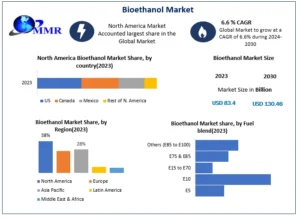
Accidents are unpredictable and can result in significant financial strain on individuals and their families. For employees, the risk of accidents is present both inside and outside the workplace. To mitigate this risk and ensure financial protection, many companies offer Group Personal Accident Insurance as part of their employee benefits package. This type of insurance provides coverage for accidental injuries, disabilities, and even death, offering financial relief when it’s most needed.
In this article, we will delve into the specifics of how group personal accident insurance works, its key features, the benefits it provides to both employees and employers and why it’s an essential component of workplace insurance coverage.
Introduction to Group Personal Accident Insurance
What is Group Personal Accident Insurance?
Group Personal Accident Insurance is a policy that covers a group of people, typically employees of a company, against accidents that lead to injuries, disabilities, or death. The coverage ensures that if an employee suffers from an accident, they or their family will receive financial compensation to help them manage medical expenses, rehabilitation, and loss of income.
Why Employers Provide Group Personal Accident Coverage
Employers often provide group personal accident insurance as part of their benefits package. This not only protects their workforce but also enhances the company’s reputation as a responsible employer that values employee well-being. Providing this coverage can improve employee satisfaction and retention while safeguarding the company’s human resources.
Key Features of Group Personal Accident Insurance
Coverage for Accidental Death
One of the main benefits of group personal accident insurance is that it provides compensation to the family of an employee in the event of accidental death. The sum insured is paid out to the beneficiaries to help them cope with the financial implications of losing a breadwinner.
Benefits for Permanent Total Disability (PTD)
If an employee suffers from a permanent total disability due to an accident, the insurance provides compensation. PTD refers to conditions where the employee is unable to work or perform regular tasks due to the severity of the disability.
Benefits for Permanent Partial Disability (PPD)
For accidents that result in partial disabilities, such as the loss of a limb or eyesight, the policy compensates the insured for their loss. The amount of compensation is typically calculated based on the severity of the disability and the sum insured.
Coverage for Temporary Total Disability (TTD)
In cases where the employee is temporarily unable to work due to an accident, the insurance provides a weekly or monthly payout to replace lost income. This benefit lasts until the employee can return to work or the period specified in the policy ends.
How Does Group Personal Accident Insurance Work?
How Policies Are Issued and Managed?
Group personal accident insurance policies are issued by employers for their workforce. The employer negotiates the terms with the insurance provider, including the level of coverage, premiums, and additional benefits. Employees are typically enrolled automatically and do not have to pay for the coverage.
Understanding the Coverage and Exclusions
While group personal accident insurance covers many types of injuries and accidents, there are exclusions to be aware of. Accidents resulting from risky behavior, such as participating in extreme sports or driving under the influence, may not be covered. It’s important for both employers and employees to understand the scope of coverage and the circumstances under which claims may be denied.
Claim Process: How Beneficiaries Can File Claims
When an accident occurs, the employee or their beneficiaries must file a claim with the insurance provider. The process typically involves submitting documentation such as medical reports, police reports (if applicable), and proof of the accident. Once all documents are verified, the insurer disburses the compensation based on the terms of the policy.
Importance of Group Personal Accident Insurance for Employees
Financial Security for Workers
Accidents can result in significant financial hardship, especially if they lead to long-term disabilities or death. Group personal accident insurance provides employees and their families with a financial safety net, ensuring they are not left struggling to cover medical bills or lost income.
Covering Medical Expenses and Rehabilitation
In addition to compensating for lost income, many group personal accident policies also cover medical expenses, including hospitalization, surgery, and rehabilitation. This coverage ensures that employees can access the care they need to recover from their injuries without worrying about the financial burden.
Why It’s an Essential Employee Benefit
Offering group personal accident insurance shows that a company cares about the welfare of its employees. It can be a key factor in attracting and retaining top talent, as workers appreciate the financial security it provides.
Types of Injuries Covered Under Group Personal Accident Insurance
Accidental Death
In the unfortunate event of an employee’s death due to an accident, the policy pays out the insured amount to the deceased’s family. This provides them with financial support to manage funeral expenses and cope with the loss of income.
Total and Partial Disabilities
The policy also covers injuries that result in total or partial disabilities, offering compensation based on the severity of the injury and its impact on the employee’s ability to work.
Loss of Income Due to Accidents
Temporary or permanent loss of income due to accidents can devastate employees and their families. Group personal accident insurance ensures that employees receive compensation to replace lost wages during their recovery period.
Benefits of Group Personal Accident Insurance for Employers
Enhancing Employee Retention
Providing group personal accident insurance as part of the employee benefits package can improve job satisfaction and retention rates. Employees are more likely to stay with a company that offers comprehensive protection in case of unforeseen accidents.
Demonstrating Corporate Social Responsibility (CSR)
Offering insurance coverage also demonstrates that the company is committed to the well-being of its employees. This can enhance the company’s image and position it as a responsible employer.
Tax Benefits for Employers
In some countries, employers can receive tax benefits for providing group personal accident insurance to their workforce. This can make the cost of the coverage more affordable for companies while providing essential protection to employees.
Common Exclusions in Group Personal Accident Insurance
Exclusions for Pre-Existing Conditions
Most group personal accident insurance policies do not cover pre-existing conditions or injuries sustained before the policy was in effect. Coverage typically applies only to new accidents that occur during the policy period.
Intentional Self-Injury or Suicide
Accidents resulting from intentional self-harm, suicide attempts, or reckless behavior are generally not covered under group personal accident insurance policies.
Injuries While Under the Influence of Drugs or Alcohol
If an accident occurs while the employee is under the influence of drugs or alcohol, the policy may exclude coverage for injuries sustained in such situations.
Group Personal Accident Insurance vs. Individual Accident Insurance
Key Differences Between Group and Individual Plans
While both group and individual accident insurance provide similar coverage, group policies are usually offered at lower premiums due to the large number of people insured under one plan. Individual plans, on the other hand, can be tailored more specifically to the needs of the individual.
Advantages of Group Coverage for Employees
Group personal accident insurance is often more affordable and easier to obtain since it’s provided by the employer. Employees do not have to go through medical underwriting or pay premiums out of pocket, making it a convenient option.
How Premiums Are Calculated for Group Personal Accident Insurance
Factors That Influence Premium Costs
Several factors influence the cost of premiums for group personal accident insurance, including the size of the workforce, the age and health of employees, and the type of industry in which they work. High-risk industries, such as construction, typically have higher premiums due to the increased likelihood of accidents.
Age, Occupation, and Risk Profiles of Employees
The demographics and job roles of employees also play a role in determining premium costs. Younger employees and those in low-risk jobs, such as office workers, generally have lower premiums compared to older employees or those in high-risk occupations.
Legal and Regulatory Requirements for Group Personal Accident Insurance
Compliance with Local Laws and Regulations
Employers must ensure that their group personal accident insurance complies with local laws and regulations. This may include providing a minimum level of coverage or adhering to specific guidelines for policy administration and claims processing.
Employer Obligations Under the Law
In some jurisdictions, employers are legally required to provide accident insurance coverage for their workers. Failure to do so can result in penalties or legal liabilities if an employee is injured on the job.
How to Choose the Right Group Personal Accident Insurance Plan
Evaluating the Size and Needs of the Workforce
When selecting a group personal accident insurance plan, employers should consider the size of their workforce and the specific risks associated with their industry. This ensures that the coverage is sufficient to protect employees without being overly expensive.
Assessing Coverage Limits and Benefits
It’s important to evaluate the coverage limits and benefits offered by different insurance providers. Employers should choose a plan that balances comprehensive coverage with affordability, ensuring that employees receive adequate protection in the event of an accident.
Working with Insurance Providers
Employers should work closely with insurance providers to customize a plan that meets the specific needs of their workforce. This may include adding optional benefits, such as coverage for medical expenses or rehabilitation services.
How to File a Claim for Group Personal Accident Insurance?
Required Documentation for Filing a Claim
To file a claim under a group personal accident insurance policy, employees or their beneficiaries must provide documentation such as medical reports, proof of the accident, and any other required paperwork specified by the insurer.
Step-by-Step Claim Filing Process
The process of filing a claim typically involves notifying the insurance provider of the accident, submitting the necessary documentation, and following up on the status of the claim. Employers often assist employees or their families in navigating this process.
Timelines for Claim Approval
Once all the required documentation is submitted, insurers usually have a set timeframe for processing claims. Depending on the complexity of the case, claims can be approved within a few weeks or may take longer if additional information is needed.
Case Studies: How Group Personal Accident Insurance Helped Employees
Real-Life Example of Accidental Injury Coverage
One example of group personal accident insurance in action is when an employee suffers a serious injury on the job. In this case, the policy can cover medical expenses and provide compensation for lost wages during the recovery period.
Benefits for Families After Accidental Death
In cases of accidental death, group personal accident insurance provides financial support to the deceased’s family. This can help cover funeral expenses and provide ongoing financial assistance to the employee’s dependents.
Frequently Asked Questions (FAQs)
- What’s the main benefit of Group Personal Accident Insurance for employees?
Group personal accident insurance provides financial protection for employees and their families in the event of accidental injury or death.
- Can part-time workers be covered under Group Personal Accident Insurance?
Yes, many group personal accident insurance policies can be extended to cover part-time workers, though the terms may vary.
- How is the premium for Group Personal Accident Insurance calculated?
Premiums are based on factors such as the size of the workforce, the age and health of employees, and the industry in which the company operates.
- Does this insurance cover accidents outside of work?
Yes, group personal accident insurance often covers accidents that occur both on and off the job.
- Are there any waiting periods before coverage starts?
Some policies may have a waiting period before coverage begins, particularly for benefits related to disabilities or medical expenses.
- How is compensation for disabilities calculated?
Compensation for disabilities is typically calculated based on the severity of the injury and the sum insured under the policy.
The Future of Group Personal Accident Insurance
As employers continue to prioritize the well-being of their employees, group personal accident insurance is expected to evolve. Innovations in coverage, such as more comprehensive disability benefits and faster claim processing, are likely to become more common. Additionally, as industries change and new risks emerge, insurers will need to adapt their policies to meet the evolving needs of the workforce.
Conclusion
Group Personal Accident Insurance plays a crucial role in protecting employees from the financial consequences of accidents. For employers, it offers a way to demonstrate their commitment to employee well-being while also benefiting from tax incentives and improved employee retention. As healthcare and workplace safety continue to evolve, the importance of this insurance will only grow.




